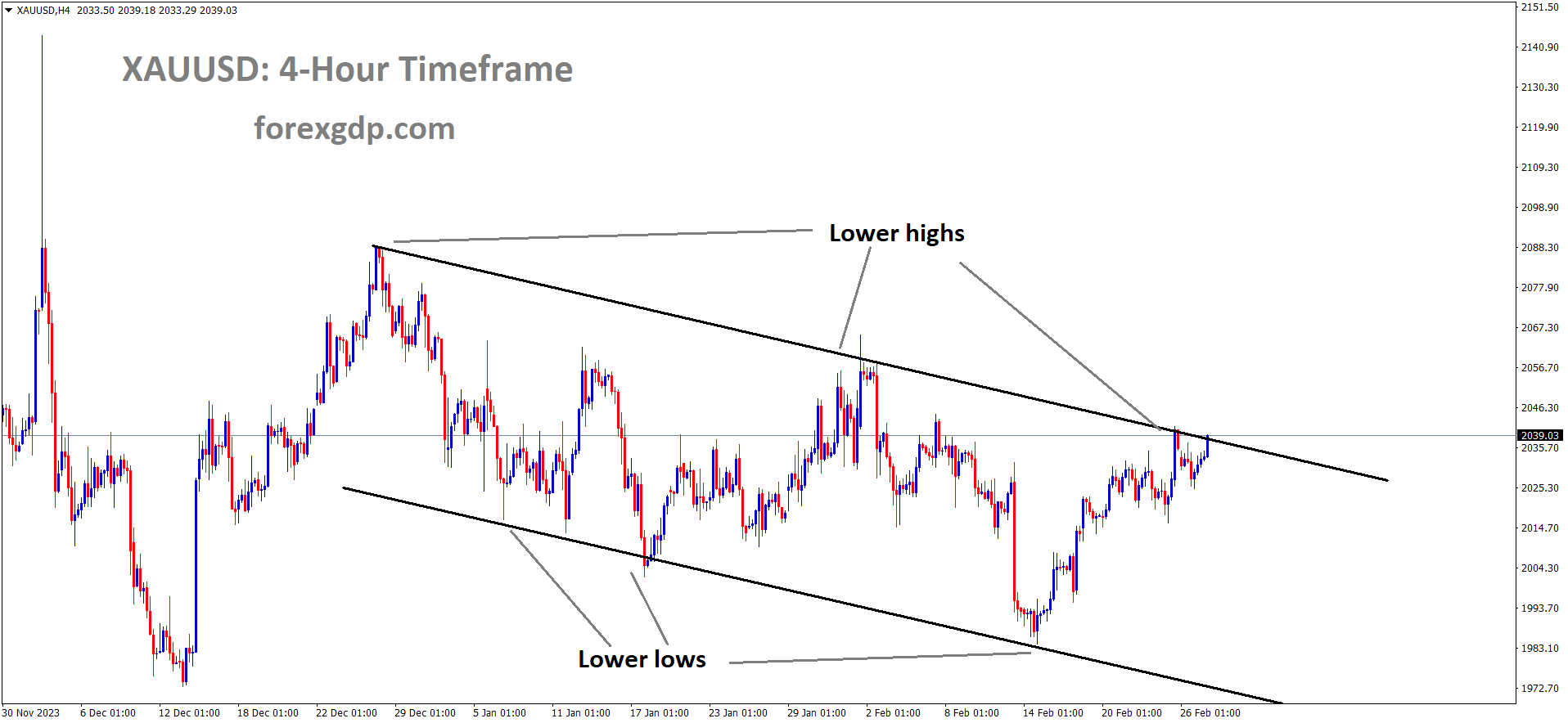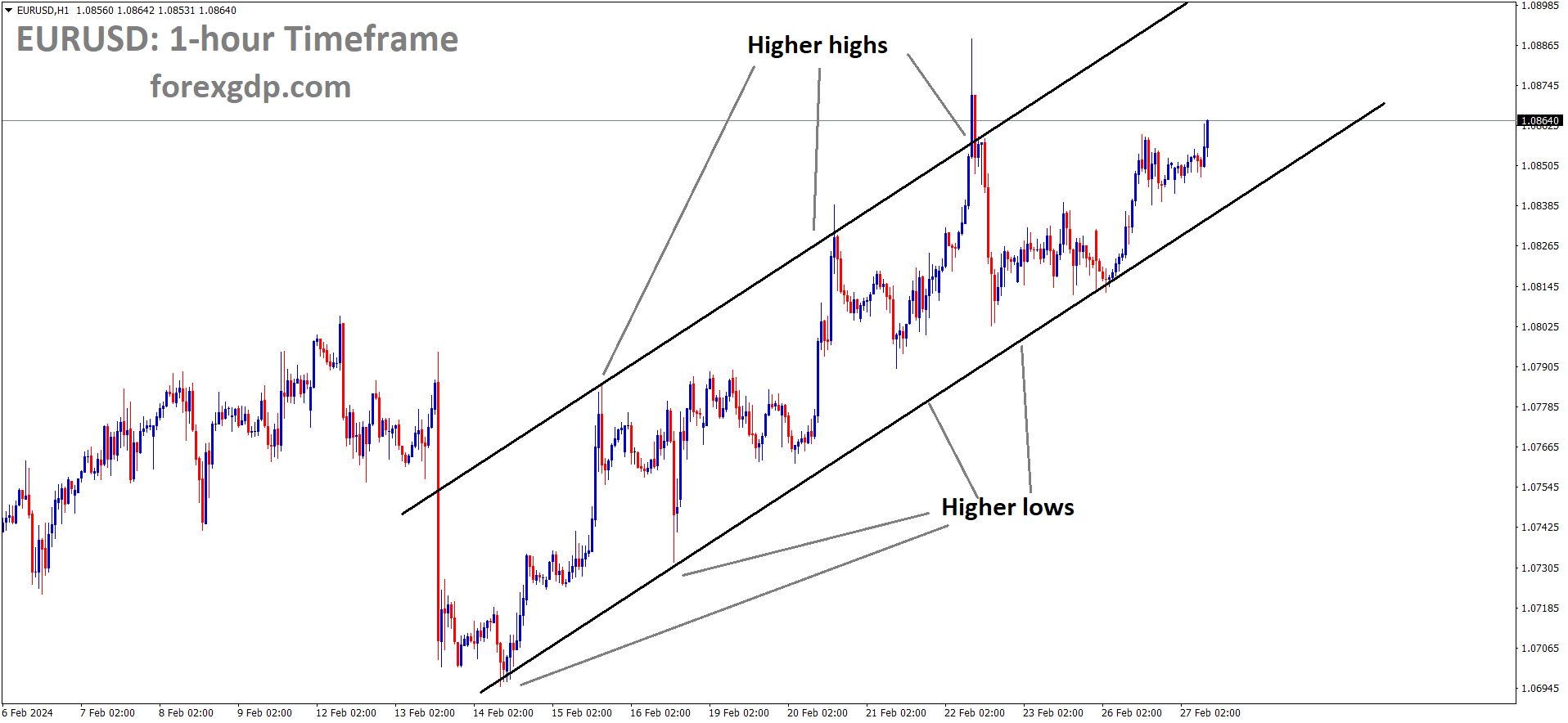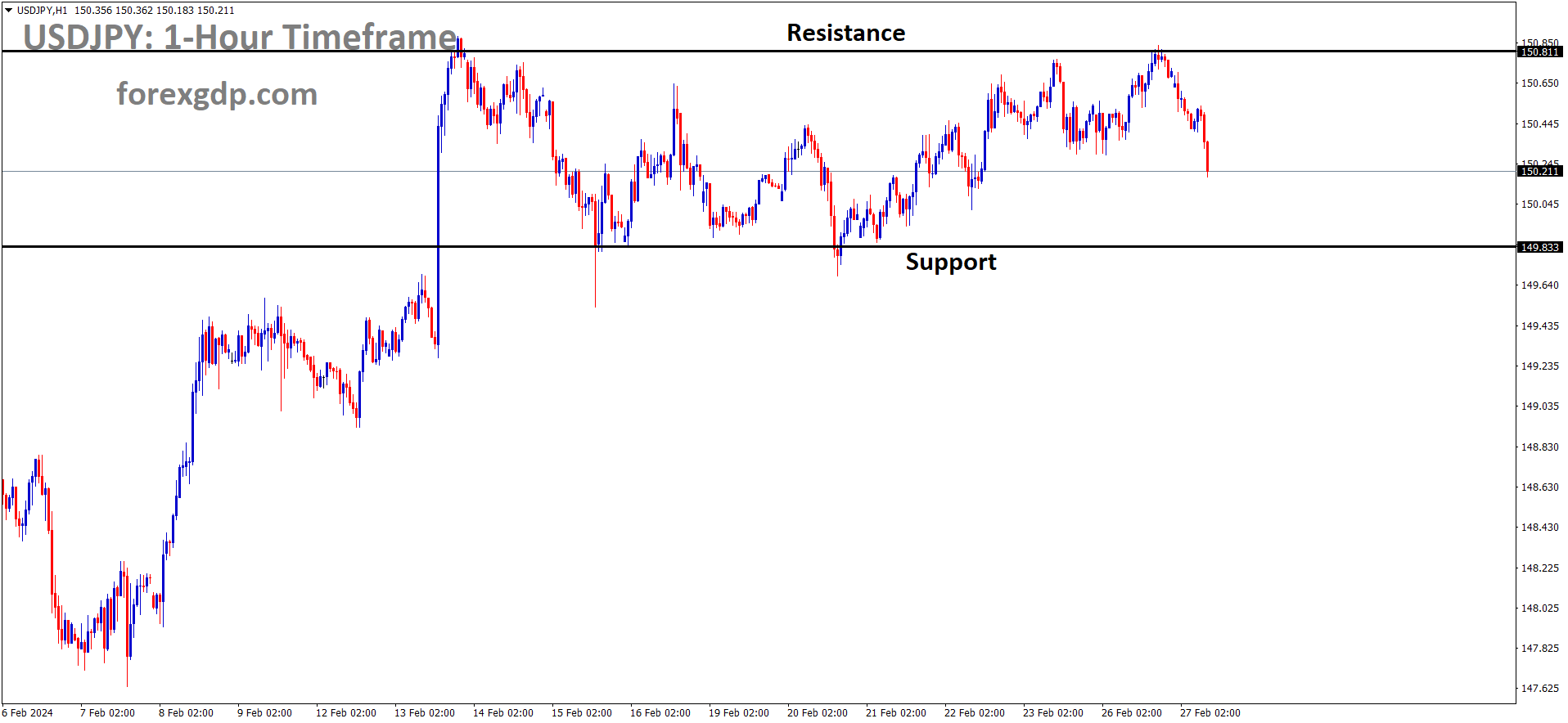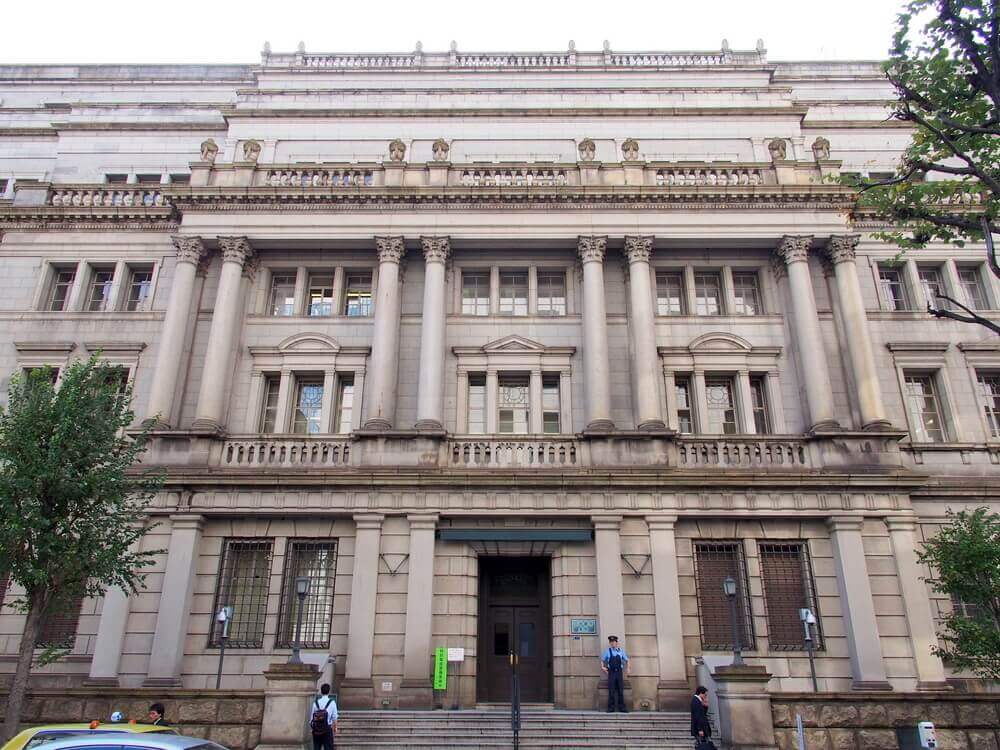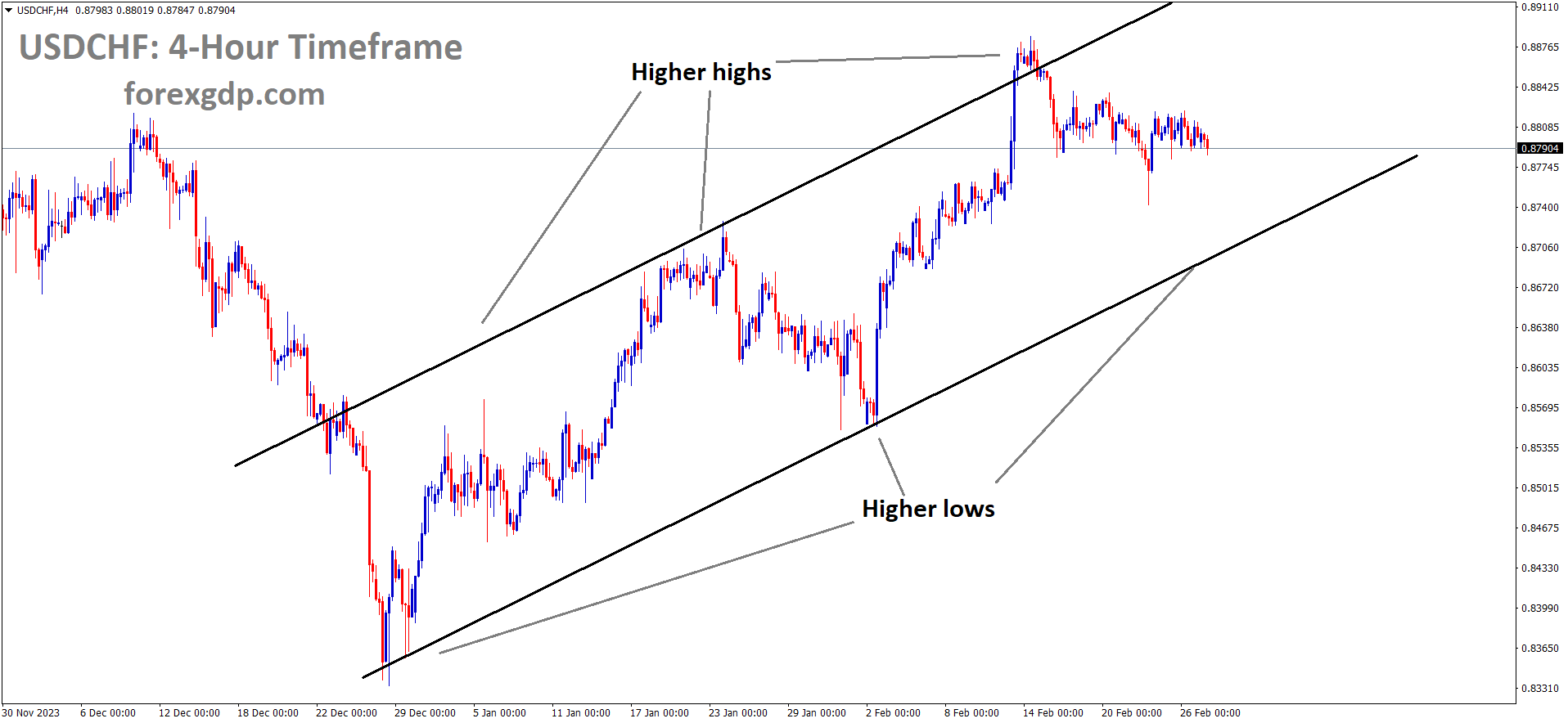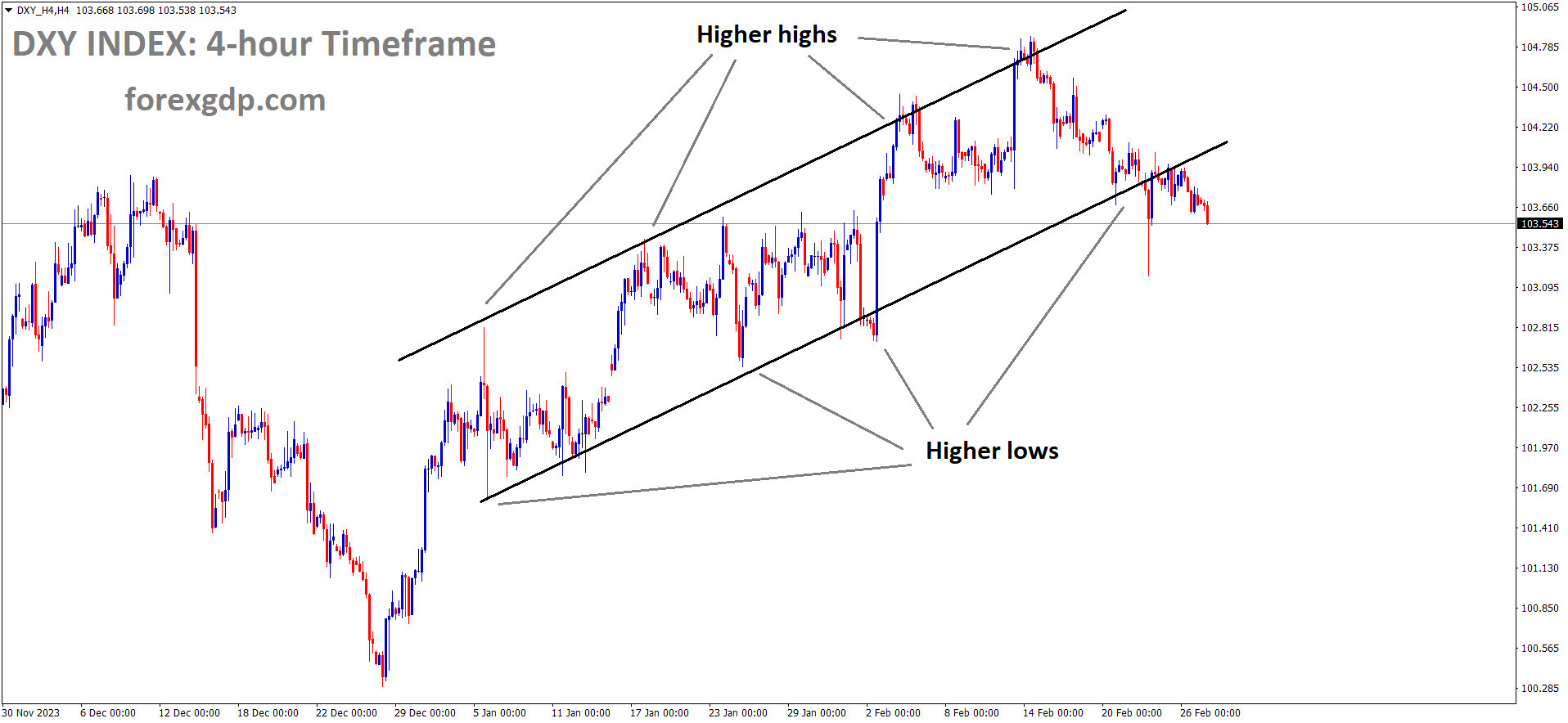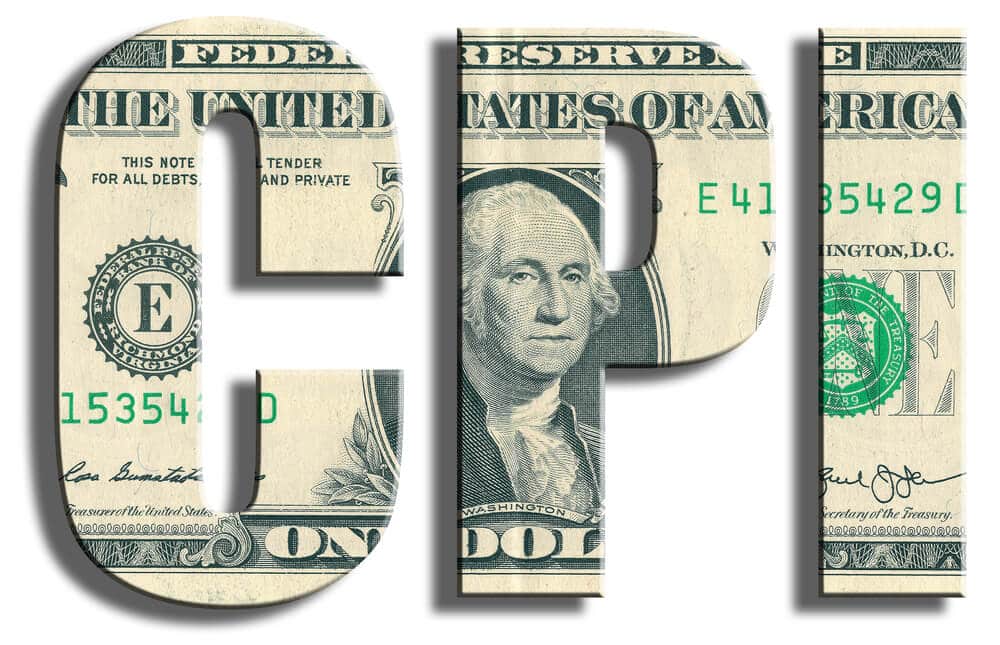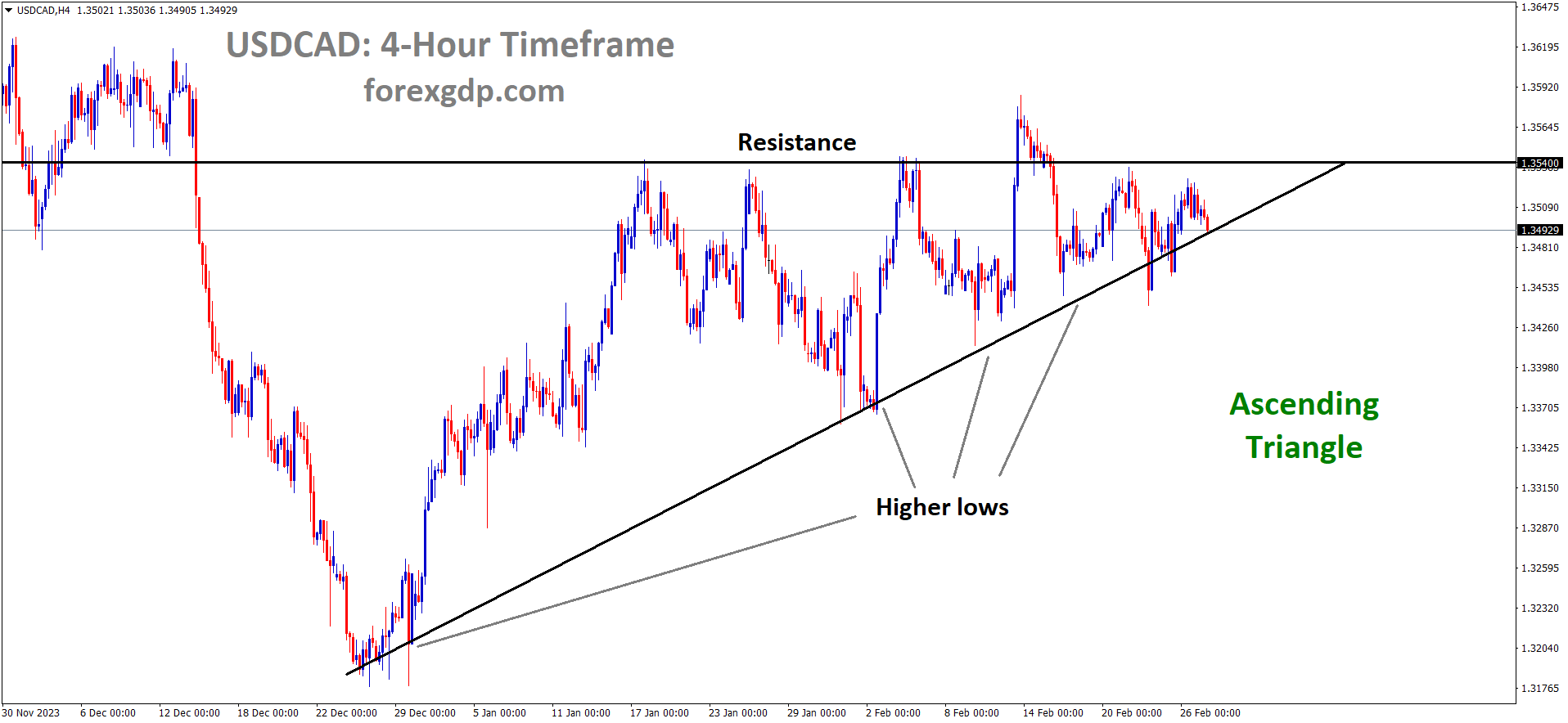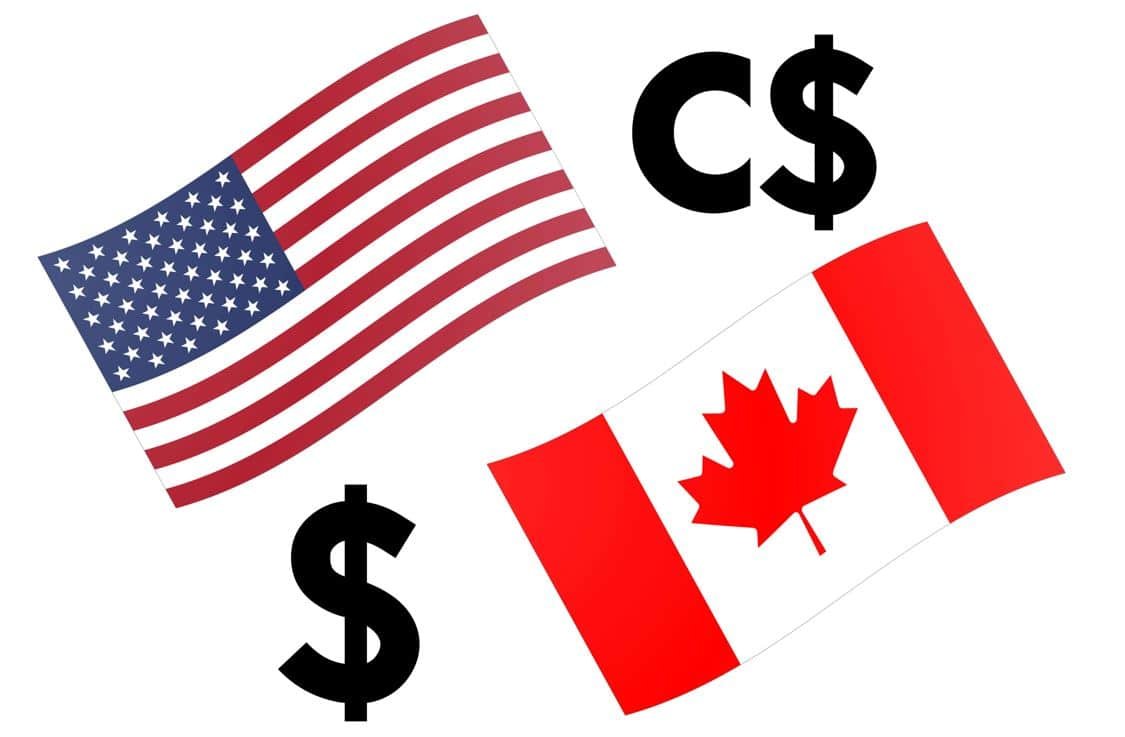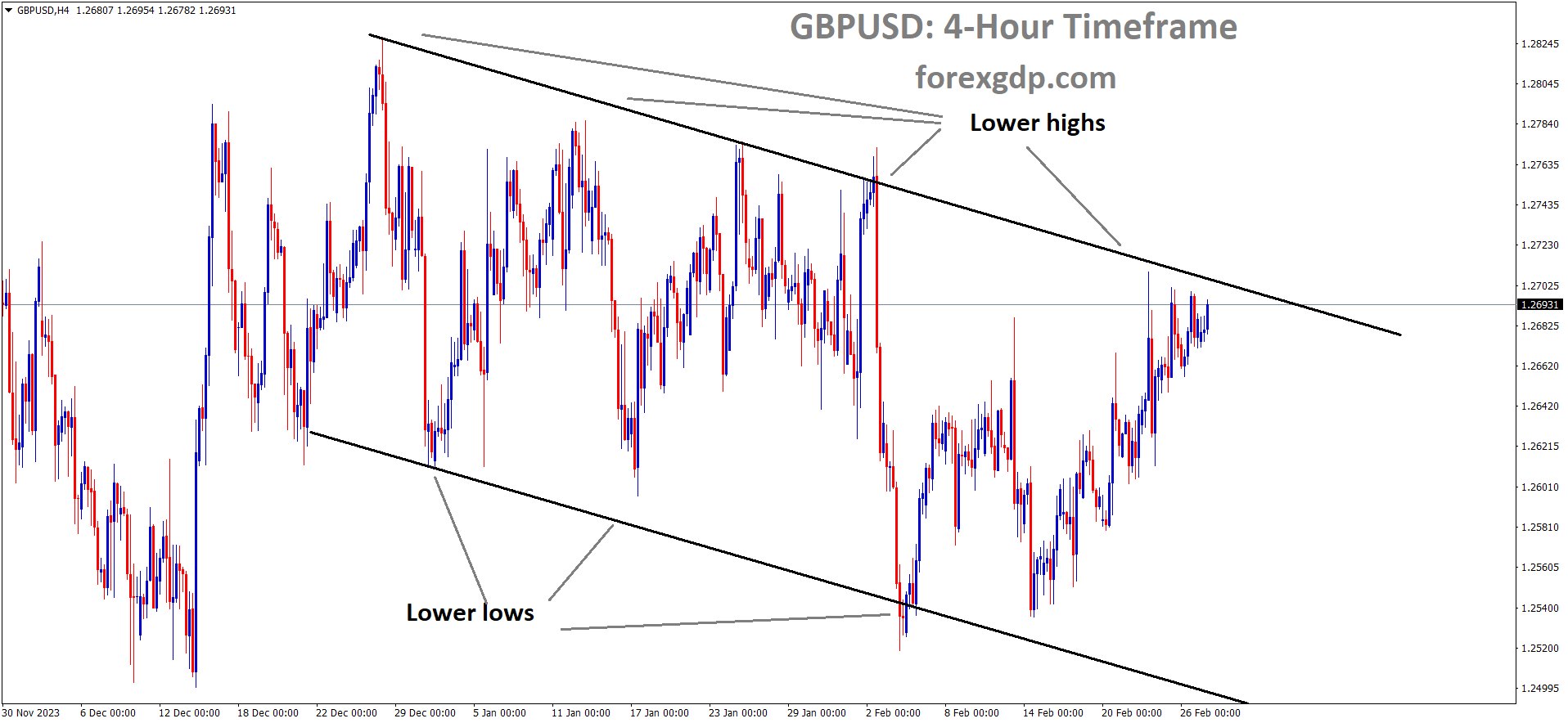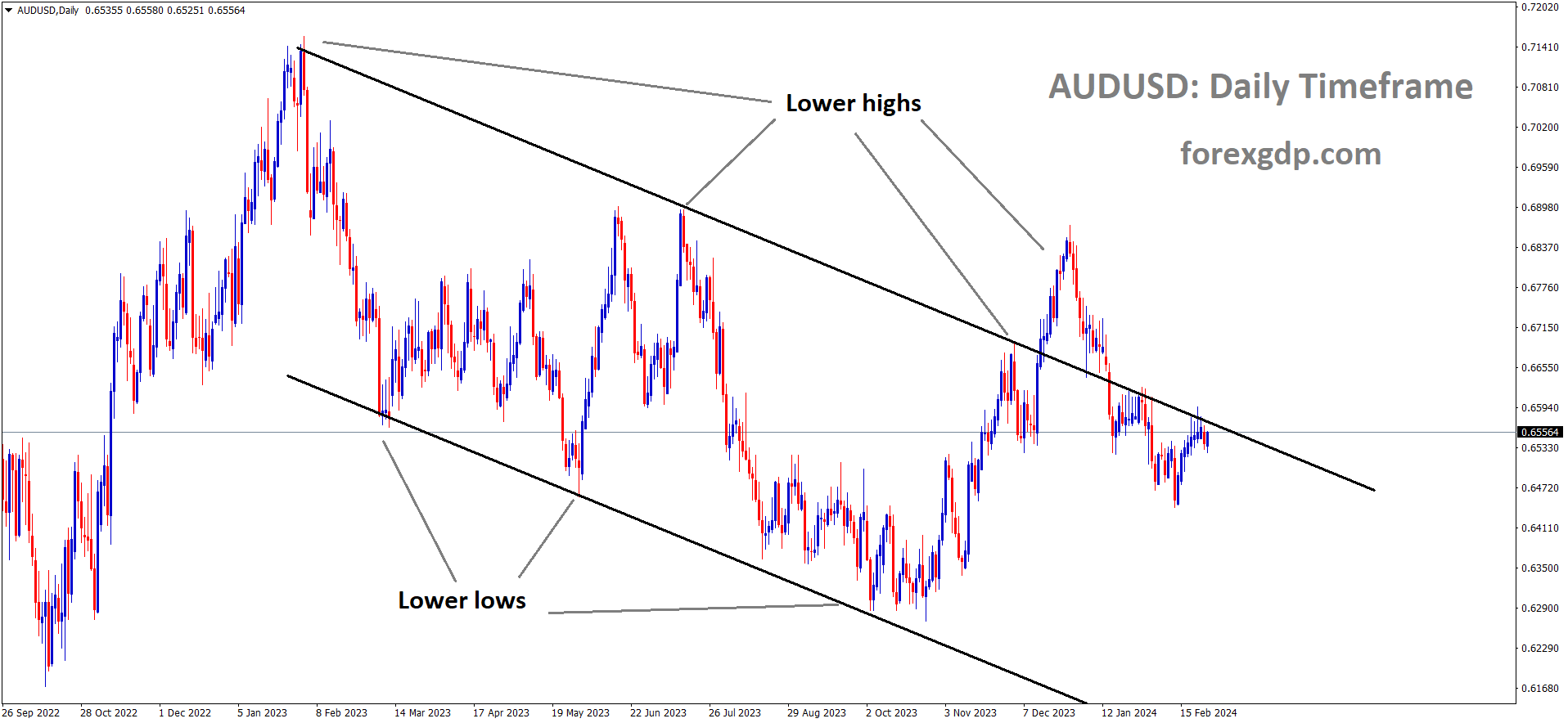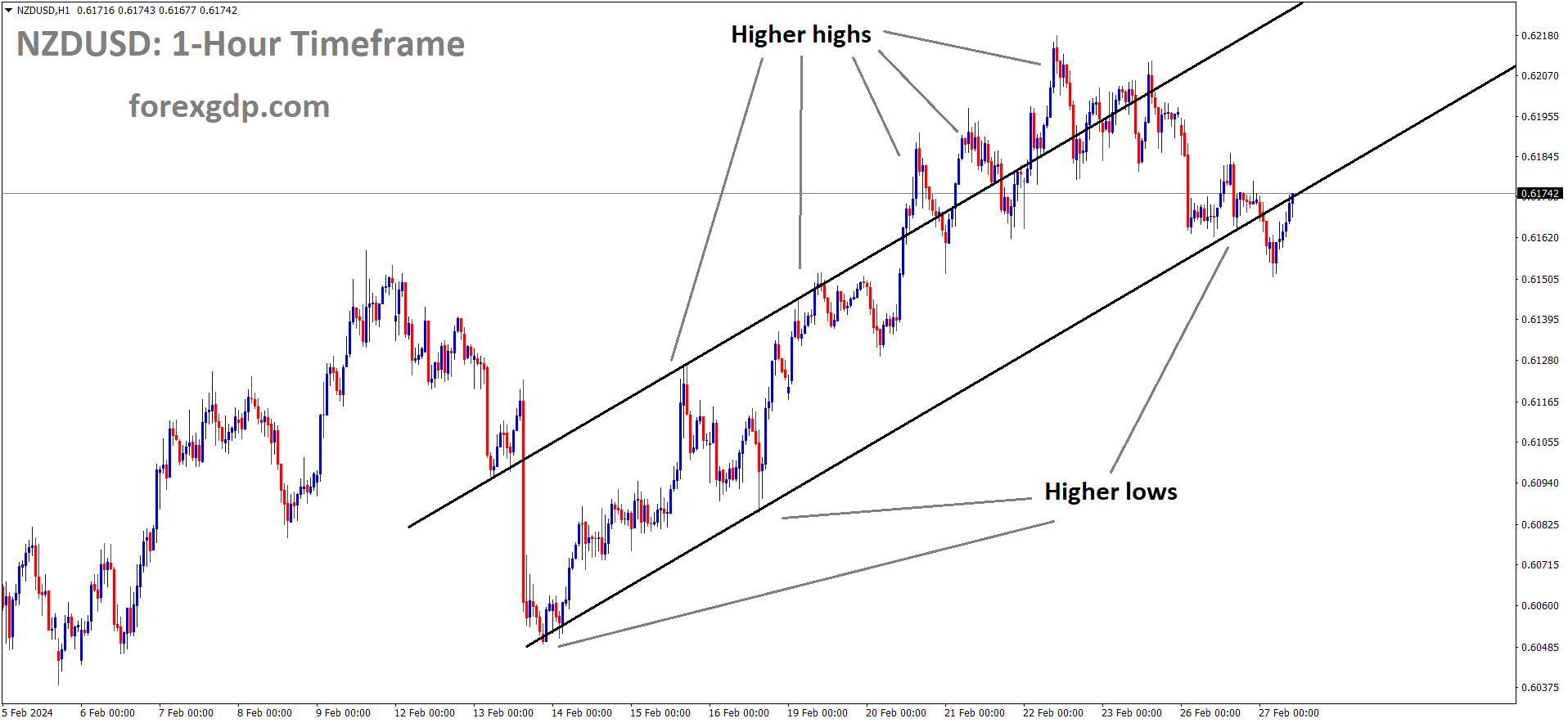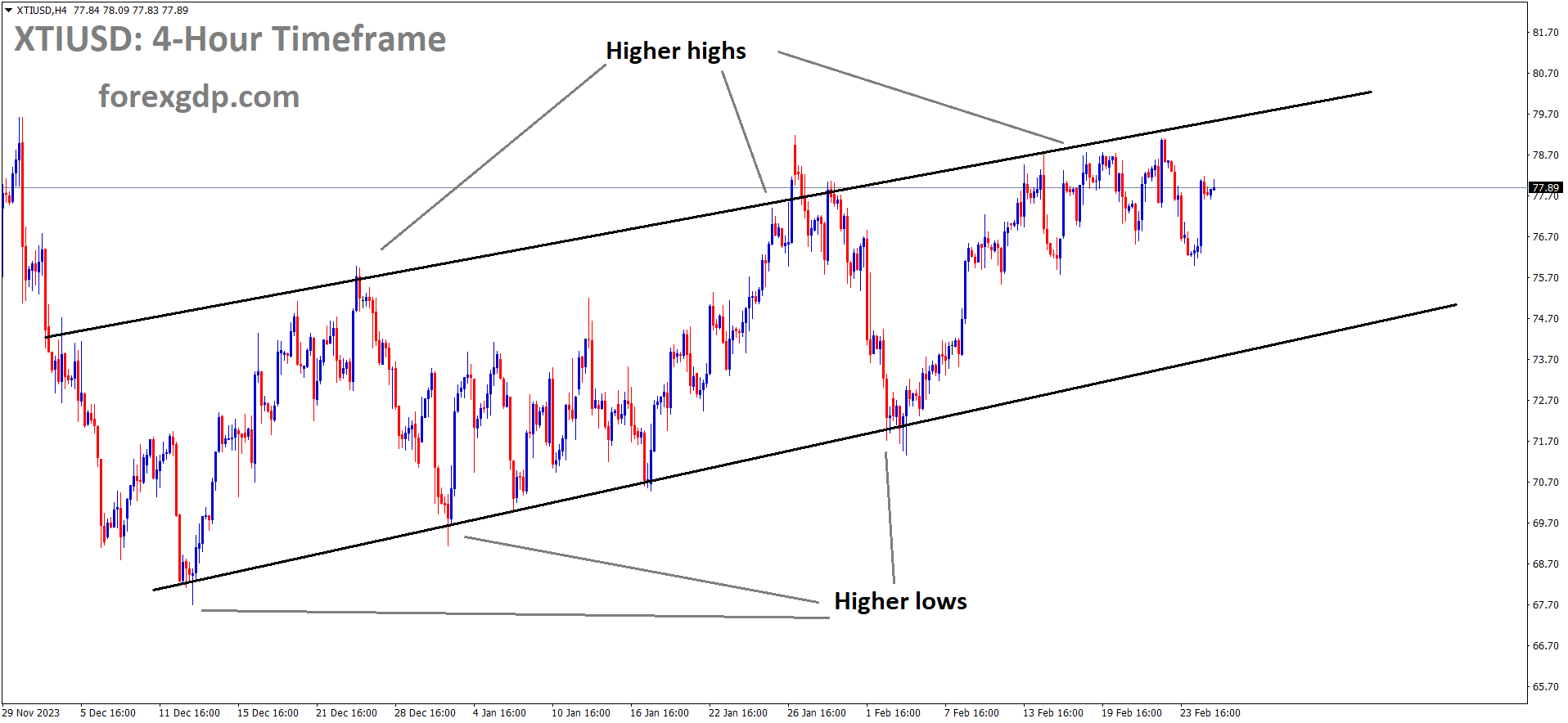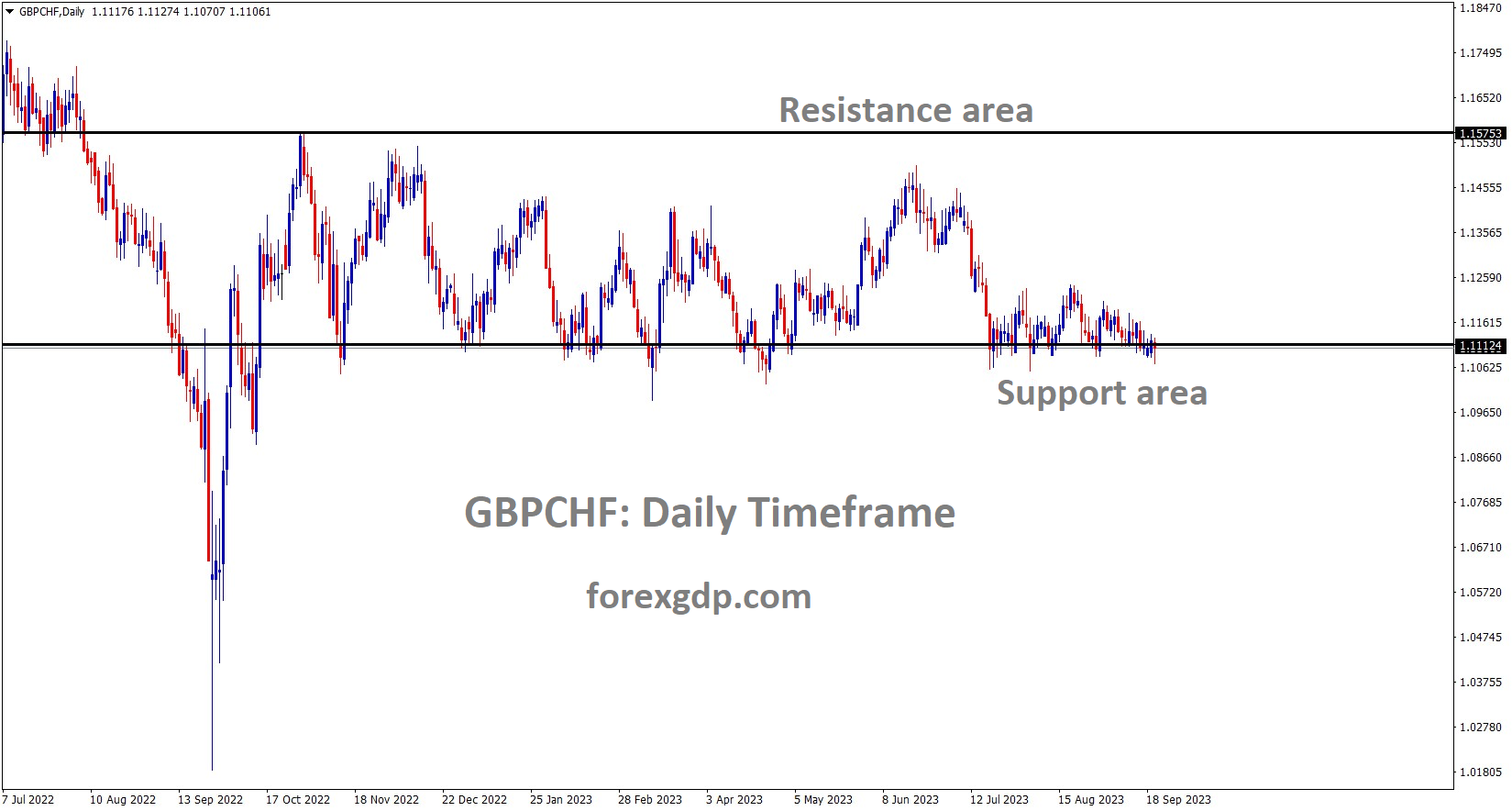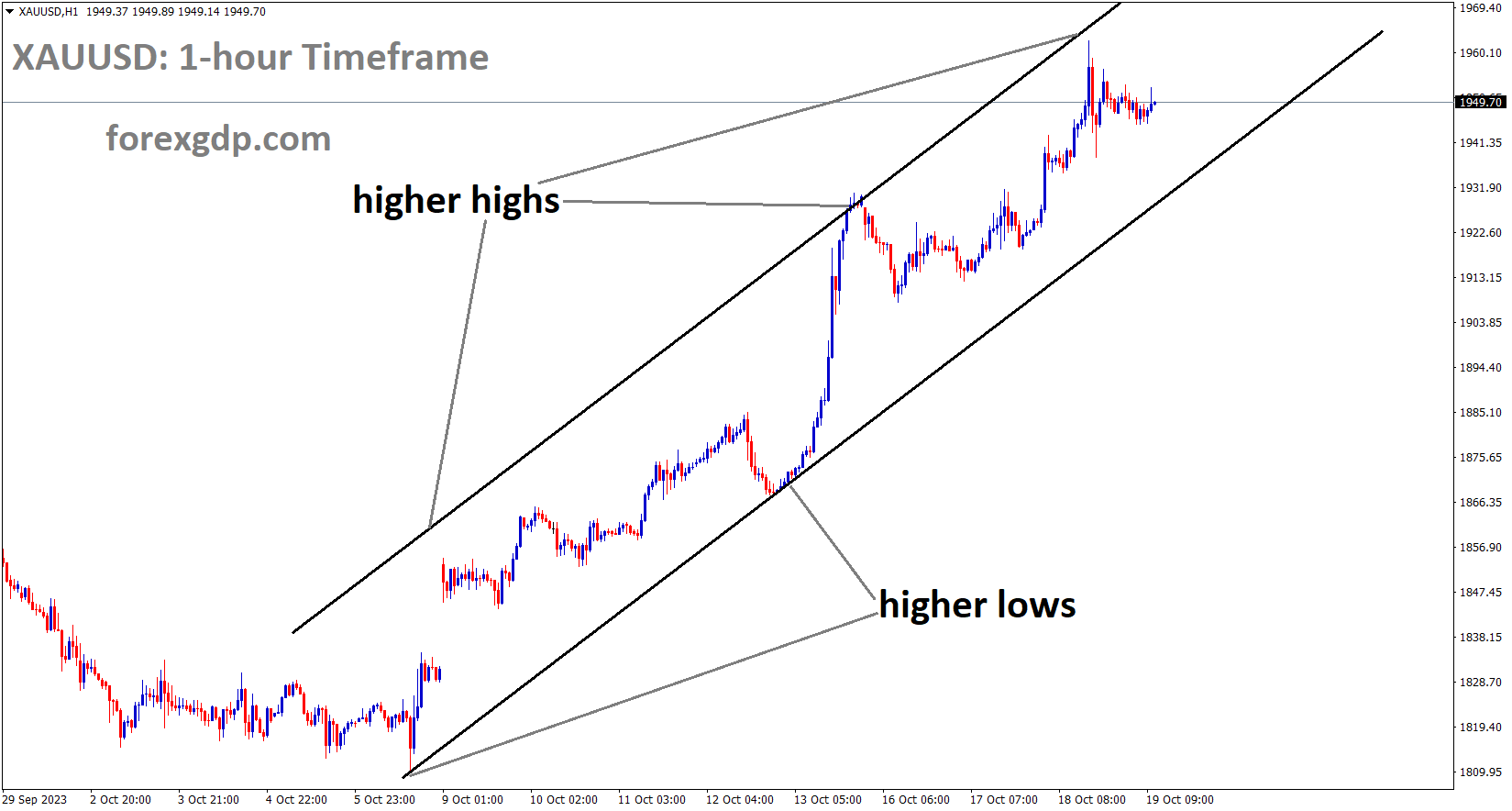XAUUSD Gold price is moving in the Descending channel and the market has reached the lower high area of the channel
GOLD – Price Drops, Records Daily Losses as Traders Await US Economic Data
Gold prices are moving flat ahead of US Q4 GDP data scheduled this week. Ongoing tensions in the Red Sea cause Volatility in Gold prices.
Mixed Sentiment Favors US Dollar as Fed Rate Cut Expectations Diminish
The sentiment remains mixed, with a slight negative tilt, favoring the US Dollar as interest rate speculators eliminate the possibility of a Fed rate cut in March and May. Odds of a rate cut in June stand at 50%. The US 10-year Treasury note rises to 4.295%, close to the year-to-date high of 4.354%, keeping pressure on gold as investors align with the Fed’s posture of three rate cuts by the end of 2024.
In market movements, gold’s advance is capped by the rise in US yields. Data-wise, US New Home Sales increased by 1.5%, falling short of the expected 0.68M at 0.661M. The Dallas Fed Manufacturing Index for February contracted at -11.3, showing improvement from January’s -27.4, indicating a recovery in business activity.
The January FOMC minutes reveal caution about reducing interest rates due to a recent uptick in inflation measures. The Fed intends to stay “highly attentive” to inflation, recognizing balanced risks but acknowledging economic risks leaning toward a downturn. Despite this, the US labor market remains strong, with fewer Americans applying for unemployment benefits.
US business activity in February moderated, with the Services and Composite Indices expanding below the previous month’s reading. However, Manufacturing surprisingly jumped out of contractionary territory. Investors are pricing in 85 basis points of easing throughout 2024.
The US Dollar Index, tracking the USD against six major currencies, currently trades near 103.84, down 0.12%. New York Fed President John Williams states that the Fed is on track to cut interest rates later this year, expecting a “bumpy” progress of inflation toward the 2% target but noting that the economy is generally heading in the right direction.
EURUSD – Lagarde: Restrictive Policy Guards Against Wage-Price Spiral
ECB President Lagarde’s Speech in Parliament is Inflation will slow down, and Labour costs will increase for Companies, But the price reflection did not see in consumers purchasing. Rates must be sustained at the current level, I hope inflation will slow down after the more tightening measures done so far.
EURUSD is moving in an Ascending channel and the market has rebounded from the higher low area of the channel
European Central Bank (ECB) President Christine Lagarde stated on Monday, “Our restrictive monetary policy stance, the subsequent significant decline in headline inflation, and firmly anchored longer-term inflation expectations act as a safeguard against a sustained wage-price spiral.”
Key Points:
– “There are increasing signs of a bottoming-out in growth, and some forward-looking indicators point to a pick-up later this year.”
– “Wage pressures, meanwhile, remain strong.”
– “The current disinflationary process is expected to continue, but the governing council needs to be confident that it will lead us sustainably to our 2% target.”
– “Labour cost increases are partly buffered by profits and are not being fully passed on to consumers.”
– “We expect inflation to continue slowing down as the impact of past upward shocks fades and tight financing conditions help to push down inflation.”
USDJPY – Japan’s Inflation Exceeds Forecasts; End of Negative Rates Imminent
Japan CPI data for January came at 2.0% versus 2.3% printed in December, beating the expected 1.9% lower level. The reading shows the hopes that the Bank of Japan will deliver the rate hikes in the April month meeting.
USDJPY is moving in the Box pattern and the market has fallen from the resistance area of the pattern
Japan’s core consumer inflation, although slowing for a third consecutive month in January, exceeded expectations and remained at the central bank’s 2% target. This outcome sustains the anticipation that negative interest rates may come to an end by April. The 2.0% rise in the core consumer prices index (CPI) was a deceleration from the 2.3% increase in December, as indicated by data from the internal affairs and communications ministry on Tuesday. This underscores the belief that diminishing cost-push inflation from commodity imports could mitigate the impact of rising living costs.
Nevertheless, the increase surpassed the median market predictions of a 1.8% rise, reinforcing the belief that substantial salary increases will be proposed by major corporations during the labor-management wage discussions on March 13. This development could set the stage for the Bank of Japan (BOJ) to discontinue negative interest rates in March or April. Marcel Thieliant at Capital Economics pointed out, “The January CPI leaves open the possibility of the BOJ hiking its policy rate at the March meeting if preliminary Shunto results, due a few days before the meeting, are encouraging.” Shunto refers to the Japanese term for the wage talks.
Thieliant further stated, “We maintain that an April hike is more probable. In February, inflation is expected to surge significantly above 2%, driven by base effects from the initiation of energy subsidies a year ago. This would enable the Bank to present a more compelling narrative, emphasizing the enduring strength of inflation.”
Japan’s core consumer price index encompasses oil products while excluding fresh food prices. The deceleration can be attributed, in part, to a significant decline in energy costs. This downturn reflects the base effect of the sharp rise observed last year and the impact of government subsidies aimed at restraining gasoline and utility bills. It indicates a diminishing cost-push pressure that had previously maintained core inflation at or above the Bank of Japan’s (BOJ) 2% target since April 2022.
Looking ahead, analysts emphasize that the crucial factor is whether wage increases surpass inflation sufficiently to empower households with purchasing power. This scenario would enable companies to consistently transfer costs, maintaining inflation persistently at the Bank of Japan’s (BOJ) 2% target. The “core core” index, which excludes both fresh food and energy prices and is closely monitored by the BOJ as a narrow gauge of the overall price trend, recorded a 3.5% year-on-year increase in January, following a 3.7% rise in December.
Regarding prices, today’s data does not present any obstacles to the Bank of Japan’s (BOJ) trajectory towards ending negative rates, anticipated to occur in April, according to Izuru Kato, Chief Economist at Totan Research. However, Kato acknowledges the BOJ’s challenge in maintaining a delicate balance, considering two consecutive quarters of gross domestic product (GDP) contraction and subdued private consumption. Additionally, he points out the stagflation-like situation arising from a weak yen, characterized by a combination of low growth and high inflation.
USDCHF – Holds at 0.8800, Investors Await US & Swiss GDP Data
SNB Chairman Thomas Jordan said inflation is within our target level of 0-2%. Rate cuts are more likely in September month, But the inflation reading sustained at this level we do earlier than expected month. On the war front between Israel and Hamas, the Swiss Franc is strengthened against counter pairs.
USDCHF is moving in an Ascending channel and the market has fallen from the higher high area of the channel
Fed Concerns on Inflation, SNB Eyes Rate Cuts, Geopolitical Tensions May Boost CHF
Several Federal Reserve officials are worried that robust spending and hiring growth could hinder progress in bringing inflation down to the 2% target. The FOMC meeting minutes revealed concerns about moving too fast to cut the benchmark interest rate, opting to wait for more evidence of inflation data before making policy decisions. Investors are watching the Core PCE on Thursday, with stronger-than-expected data potentially supporting a case for keeping interest rates high, benefiting the US Dollar (USD).
Swiss National Bank President Thomas Jordan noted that while inflation wouldn’t exceed the target range of 0 to 2%, it’s approaching the upper limit. Markets anticipate SNB rate cuts in September, potentially accelerated by recent Swiss inflation data.
Geopolitical tensions in the Middle East, with Houthi attacks on merchant ships in solidarity with Palestinians amid Israel-Hamas conflict, may boost the Swiss Franc (CHF) as a safe-haven currency.
Looking ahead, the release of US GDP for Q4 on Wednesday and Swiss Q4 GDP growth numbers, along with the US Core PCE on Thursday, could provide direction for the USD/CHF pair.
USD INDEX – Fed’s Schmid: High Inflation Persists, No Need for Preemptive Rate Cuts
Kansas City FED Governor Jeffrey Schmid said FED has to wait for rate cuts. Inflation in the US economy is still not lower than we expected. FED has to reduce the balance sheet, and then only tightening measures occur in the economy. So Rates as to maintain patience with current reading.
USD Index is moving in an Ascending channel and the market has reached the higher low area of the channel
Kansas City Federal Reserve (Fed) Bank President Jeffrey Schmid stated on Monday that the US central bank is not in a hurry to cut interest rates. Here are some key quotes from his remarks:
– “No need to preemptively adjust the stance of policy.”
– “Fed should be patient, wait for convincing evidence that the inflation fight has been won.”
– “In ‘no hurry’ to halt the ongoing reduction in size of the Fed’s balance sheet.”
– “We are not out of the woods yet on ‘too high’ inflation.”
– “How much further the Fed can shrink its balance sheet is an open question.”
– “Don’t favor an ‘overly cautious’ approach to balance sheet runoff; some interest-rate volatility should be tolerated.”
– “Fed should minimize its footprint in the financial system, particularly as it relates to the Fed’s balance sheet.”
– “Returning inflation to 2% will likely require restoring balance in labor markets and moderating wage growth.”
– “Reducing the Fed’s balance sheet should be a priority once the crisis has passed.”
– “A large Fed balance sheet can create unintended consequences, including on bank lending and liquidity.”
– “January CPI inflation data argues for caution.”
– “A large Fed balance sheet can create asset-price distortions.”
– “Bank regulators should take a tailored approach.”
USDCAD – Hovers Near 1.3500, Awaits US and Canadian GDP Data
Canada GDP Q4 is scheduled tomorrow, Already Canadian CPI data came at lower than expected last week. So Canadian dollar will move according to the data outcome. The 58% polls suggested the Bank of Canada do rate cuts in April month after the CPI data results and it rose from 33% in previous polls.
USDCAD is moving in an Ascending triangle pattern and the market has reached the higher low area of the pattern
Investors await key economic data this week, with US and Canadian Gross Domestic Product (GDP) releases scheduled for Wednesday and Thursday.
Fed Chairman Jerome Powell’s recent comments emphasize the central bank’s cautious approach, waiting for sustained confidence in inflation reaching the 2% target before considering interest rate cuts. The dovish stance, coupled with concerns among policymakers about the risks of quick rate cuts, acts as a headwind for the USD/CAD pair.
On the Canadian side, CPI inflation eased to 2.9% in January, sparking speculation of a potential early interest rate cut by the Bank of Canada (BoC). While the March 6 BoC meeting is expected to maintain the rate at 5.0%, there is a growing market expectation, now at 58%, for a rate cut in the April meeting.
Key events this week include US Durable Goods Orders, Consumer Confidence, and Richmond Fed Manufacturing Index on Tuesday, along with a speech by the Fed’s Michael Barr. The highlight will be the US and Canadian GDP releases for Q4, potentially introducing volatility and offering a clear direction for the USD/CAD pair.
GBPUSD – Potential Resistance at 1.2700 Level
Last week the Bank of England monetary policy committee meeting outcome was hawkish, So GBP moving higher against counter pairs this week. Domestic data printed last week was higher than expected from the UK Side.
GBPUSD is moving in the Descending channel and the market has reached the lower high area of the channel
Testimony to the UK Treasury committee by Bank of England (BoE) Governor Andrew Bailey and other policymakers last week has fueled speculation of a postponement in rate cuts. This has strengthened the Pound Sterling (GBP) and provided a tailwind for the GBP/USD pair.
AUDUSD – China to Remove Wine Tariffs on Australian Imports by End of March – ABC News
China has a plan to remove the Wine Tariffs for Australian Imports at the end of March. Last year China removed the Tariffs for Australian Hay for smoothening the trade relationships. This news is positive for China- Australian Trade relationships.
AUDUSD is moving in the Descending channel and the market has reached the lower high area of the channel
ABC News, citing sources, reported on Tuesday that China is contemplating the removal of tariffs on Australian wine imports by the end of March. No additional details are currently provided.
In the previous year, China lifted trade restrictions on Australian hay imports, signaling progress in the trading relationship.
NZDUSD – Dips Below 0.6200 Barrier; Investors Await RBNZ Rate Decision
RBNZ Monetary policy meeting scheduled tomorrow, rates will be maintained at 5.50% as the previous reading is more expected. RBNZ Chief Economist Paul Conway already told in this month, that inflation is still far away from our target of 2%.
NZDUSD is moving in an Ascending channel and the market has rebounded from the higher low area of the channel
NZD/USD Slips Despite Weaker Dollar; Focus on RBNZ Rate Decision
The currency pair faces downward pressure, influenced by the softer US Dollar Index (DXY), while investors eagerly anticipate the Reserve Bank of New Zealand (RBNZ) interest rate decision scheduled for Wednesday, with expectations of no rate change.
Recent US inflation data has revealed persistent inflation, causing investors to resist expectations of rate cuts. The Federal Reserve (Fed) emphasizes a tightening policy to bring inflation back to its 2% target, though prices remain elevated. New York Fed President John Williams cautioned about the possibility of early rate cuts, indicating the central bank’s intention to lower borrowing costs later this year.
Anticipating the RBNZ meeting, the Official Cash Rate is expected to remain unchanged at 5.5%, but the potential for a hike persists due to challenges in curbing inflation. The market prices in a 25% chance of a rate hike, as the RBNZ has maintained the rate since May last year. Recent hawkish comments from RBNZ policymakers have boosted the New Zealand Dollar (NZD) against the US Dollar (USD). Chief economist Paul Conway stated that the central bank still has work to do to bring inflation to its 2% target, while Orr acknowledged the need to anchor inflation expectations.
Traders will closely monitor the RBNZ monetary policy meeting on Wednesday, and later in the day, attention will shift to the US Gross Domestic Product Annualized for Q4. Subsequently, focus will turn to the Personal Consumption Expenditures (PCE) Index on Thursday, potentially providing a clear direction for the NZD/USD pair.
XTIUSD – WTI Holds at $77.30 Amid Supply Disruption Concerns
Oil Prices are stable after the US said negotiations between Hamas and Israel will soon be completed. Israel said they would stop the attack only when our people were released from Hamas’s side. High-level Palestinians will be released once our captives are released from Hamas. Otherwise, we do more attacks in Rafah regions where more Palestinians are occupied.
XTIUSD Oil price is moving in an Ascending channel and the market has reached the higher high area of the channel
As of my last knowledge update in January 2022, there have been no changes in the designation of any group as a terrorist organization in the Red Sea region. It’s essential to note that geopolitical situations are dynamic, and the latest developments might not be covered in my knowledge.
Regarding the information provided, geopolitical tensions in the Red Sea region, specifically actions by Iran-led Houthis, have led to concerns about potential disruptions to oil supply lines between Europe and Asia. Israeli Prime Minister Benjamin Netanyahu’s statement about potential military actions in Rafah and discussions around releasing captives add to the complexity of the situation.
US President Joe Biden’s expressed belief in negotiations and the cautious stance on interest rate reductions by Kansas City Federal Reserve Bank President Jeffrey Schmid are also factors influencing the market.
Additionally, the resumption of operations at the Wafa oil field in western Libya after a temporary shutdown contributes to the broader context of global oil dynamics.
Please note that the situation may have evolved since my last update, and I recommend checking the latest news sources for the most recent information on geopolitical developments and their impact on oil markets.
Don’t trade all the time, trade forex only at the confirmed trade setups.
Get more confirmed trade setups here: forexgdp.com/buy/

